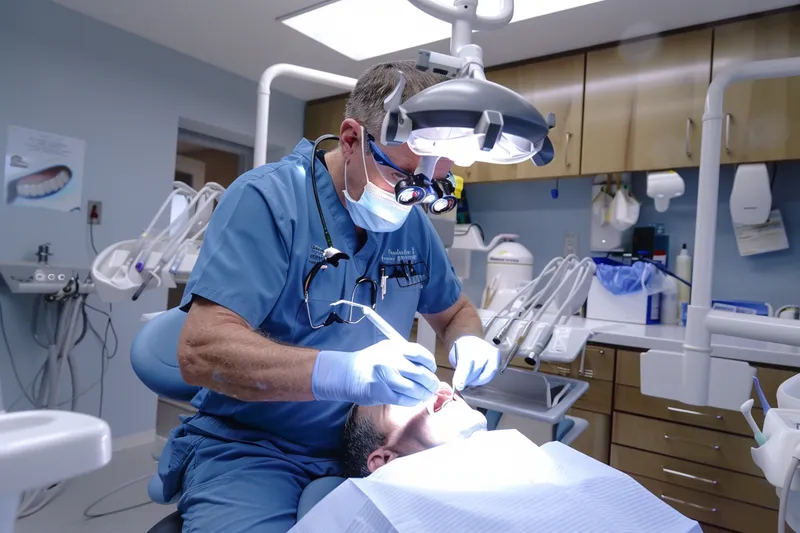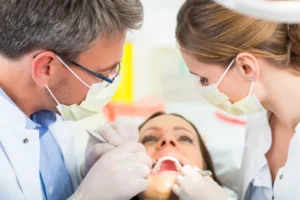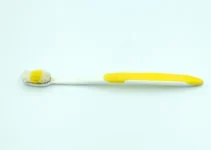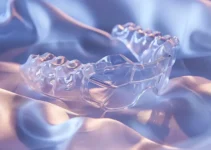When faced with a sudden dental emergency, knowing how to react can be crucial for preserving your oral health. An emergency dentist is your go-to professional for immediate dental issues such as severe toothache, knocked-out teeth, or jaw injuries. This article discusses what qualifies as a dental emergency, how to manage pain and swelling at home, and the importance of seeking professional help promptly. Understanding these key aspects can significantly lessen the damage and ensure a quicker recovery.
What to Do in a Dental Emergency
In unexpected situations involving your dental health, knowing how to handle a dental emergency can make all the difference. Whether it’s a severe toothache, a knocked-out tooth, or a broken crown, prompt and appropriate action can greatly improve the outcome. This guide aims to equip you with the knowledge to manage dental emergencies effectively.
Immediate intervention can help mitigate pain, prevent further damage, and even save teeth. By being prepared and understanding the crucial steps to take, you can turn a potentially distressing situation into one that is manageable. Read on to find out more about the essential measures to undertake during a dental emergency.
Below, we’ll explore how to recognize the signs of a dental emergency, the immediate actions you should take, and when it’s essential to contact an emergency dentist. These insights will empower you to respond swiftly and effectively, ensuring the best possible outcome for your oral health.
Recognize the Signs of a Dental Emergency
Understanding the difference between a routine dental issue and a true emergency is critical. Common symptoms of a dental emergency include severe pain, bleeding, and visible damage to teeth or gums. If you experience any of these, it’s vital to act promptly.
Specific signs to look out for include:
- Severe toothache: If the pain is unbearable and not alleviated by over-the-counter painkillers, it might indicate an underlying issue such as an infection or abscess.
- Bleeding gums: While minor bleeding can be common, especially after flossing, persistent or heavy bleeding could signify a serious condition.
- Broken or knocked-out teeth: Physical trauma resulting in tooth damage requires immediate attention to increase the chances of saving the tooth.

By recognizing these signs, you can quickly determine whether you are facing a dental emergency and need to take immediate action.
Immediate Actions to Take
If you find yourself in a dental emergency, taking swift and appropriate actions can be crucial. Here are the immediate steps you should consider:
- For a knocked-out tooth: Handle the tooth by the crown, avoiding the root. Rinse it gently with water if it’s dirty but don’t scrub or remove any attached tissue. Try to place it back in its socket if possible, or keep it in a container of milk or a saline solution.
- For severe toothache: Rinse your mouth with warm water. Use dental floss to remove any trapped food that could be causing pain. Apply a cold compress to the outside of your cheek to alleviate pain and reduce swelling.
- For a broken tooth: Rinse your mouth with warm water and use a cold compress on the affected area. Save any broken pieces of the tooth, if possible.
These actions can provide temporary relief and protect your teeth and gums from further damage until you can see a dentist.
When to Contact an Emergency Dentist
Not all dental issues require immediate professional attention, so understanding when to contact an emergency dentist is crucial. Generally, you should seek emergency dental care if you experience any of the following:
Persistent severe pain: If pain continues despite following first-aid steps and taking over-the-counter pain relievers, it’s time to consult a dentist. This could indicate a serious condition that needs prompt treatment.
Heavy bleeding: If you’re unable to control bleeding with basic first-aid measures, professional intervention is necessary to prevent further complications and ensure proper healing.
Visible signs of infection: Symptoms like swelling, fever, and pus indicate an infection that could spread if not treated promptly. This requires immediate dental attention to avoid more serious health issues.
In any of these situations, it’s important to contact an emergency dentist as soon as possible. Timely professional care can effectively address the emergency and prevent long-term damage to your oral health.
By staying informed and prepared, you’ll be better equipped to handle dental emergencies. For more insights and tips on maintaining optimal oral health, be sure to explore our other articles.
Common Types of Dental Emergencies
Dental emergencies can occur at any time and often require immediate attention to alleviate pain and prevent long-term damage. Knowing the most common types of dental emergencies and how to manage them can be very beneficial. This article will cover some of the most frequent dental emergencies and provide essential information on how to handle each situation.
While some dental issues might seem minor at first, they can quickly escalate into more serious problems if not treated promptly. Understanding what constitutes a dental emergency can help you take the right steps quickly and effectively. Below are some of the most common types of dental emergencies and what you should do in each case:
Toothaches and Severe Pain
Toothaches are one of the most common dental emergencies. The pain can range from mild discomfort to excruciating agony, making it difficult to eat, sleep, or go about your daily activities. A toothache can be caused by various issues, such as cavities, gum disease, or even a cracked tooth.
Immediate steps: Rinse your mouth with warm salt water to reduce inflammation and remove any debris that might be causing pain. Over-the-counter pain relievers can help manage pain temporarily, but you should avoid aspirin, as it can cause bleeding in the affected area.
It’s crucial to see a dentist as soon as possible to identify the underlying cause of the pain and receive appropriate treatment. Ignoring a toothache can lead to more severe problems, like abscesses or infections, which could require more intensive treatment.
Broken or Chipped Teeth
Accidents or injuries can sometimes result in broken or chipped teeth. Whether it’s a small chip or a significant break, any damage to your teeth should be addressed promptly to prevent further complications. Broken teeth can be painful and may also affect the appearance of your smile.
Immediate steps: Rinse your mouth with warm water to clean the area and apply a cold compress to your face to reduce swelling. Save any broken pieces of the tooth and bring them to your dentist. Over-the-counter pain medication can help manage any discomfort until you can see a dental professional.
In many cases, a broken or chipped tooth can be repaired with dental bonding, veneers, or crowns. However, if the tooth’s pulp is damaged, a root canal may be necessary to save the tooth. Prompt treatment is crucial to prevent infection and restore the tooth’s function and appearance.
Knocked-Out Teeth
Having a tooth knocked out is a severe dental emergency that requires immediate action. The chances of saving a knocked-out tooth are highest if you see a dentist within 30 minutes of the incident. Acting quickly can make the difference between saving or losing the tooth.
Immediate steps: Retrieve the tooth by holding it by the crown (the part that’s visible in your mouth) and avoid touching the root. Rinse the tooth gently with water if it’s dirty, but do not scrub it or remove any attached tissue fragments. Try to place the tooth back into its socket, ensuring it’s facing the right way. If this isn’t possible, place the tooth in a container of milk or saline solution.
Getting to a dentist promptly is essential for the best possible outcome. The dentist will clean the affected area, possibly perform a root canal, and splint the knocked-out tooth to the surrounding teeth until it reattaches. Follow-up appointments are crucial to monitor the tooth’s healing process. Understanding these common dental emergencies and how to handle them can make a significant difference in the outcome and ensure that you receive the best possible care. For more insightful articles on dental health and emergencies, be sure to check out our other posts.
Preventing Future Dental Emergencies
Dental emergencies can occur unexpectedly and often come with a great deal of pain and inconvenience. However, many of these emergencies can be prevented with proactive measures. By understanding and implementing key strategies, patients can significantly reduce their risk of encountering oral health crises. This section will delve into two crucial aspects: regular dental checkups and proper oral hygiene.
Regular Dental Checkups
One of the most effective ways to prevent dental emergencies is by scheduling regular dental checkups. According to the American Dental Association (ADA), it is recommended to visit the dentist at least twice a year for routine evaluations and cleanings. These visits allow for the early detection of potential problems, such as cavities, gum disease, and oral cancer, often before symptoms become severe. During a dental checkup, a professional will not only clean your teeth but also carry out a thorough examination. This includes checking for signs of wear and tear, decay, and other anomalies. X-rays are sometimes taken to identify issues that are not visible to the naked eye. Early intervention can prevent minor issues from escalating into major emergencies.
Regular dental visits also enable the dentist to provide personalized advice on maintaining oral health. This guidance can include recommendations for diet, oral care products, and techniques specific to each patient’s unique needs. In essence, these checkups provide a comprehensive approach to safeguarding one’s oral health.
Proper Oral Hygiene
Maintaining proper oral hygiene is paramount in preventing dental emergencies. Brushing and flossing daily are foundational practices that help to eliminate plaque and food particles that can lead to decay and gum disease. It is recommended to brush at least twice a day with a fluoride toothpaste and to floss once daily to clean between teeth where the brush can’t reach.
A well-established oral hygiene routine can prevent a range of issues that might otherwise necessitate emergency care. For instance, removing plaque regularly prevents it from hardening into tartar, which can cause gum disease. Gingivitis, the early stage of gum disease, can progress to periodontitis, a serious condition that affects the bone supporting the teeth, if left unchecked.
In addition to brushing and flossing, mouthwash can be a beneficial adjunct to oral hygiene. Mouthwashes that contain antibacterial agents can help to reduce the microbial load in the mouth, thereby lowering the risk of infection and inflammation. Furthermore, diet plays a significant role; limiting sugary and acidic foods can prevent enamel erosion and cavities.
By adopting these oral hygiene practices, individuals can create a strong defense against potential dental problems. Moreover, these preventive measures contribute to overall health, as poor oral health has been linked to conditions such as heart disease and diabetes. Thus, proper oral hygiene is a cornerstone of both dental and general well-being.
Preventing future dental emergencies requires a multifaceted approach. Regular dental checkups and proper oral hygiene are fundamental practices that can safeguard your oral health. We encourage you to read more articles to explore other strategies and insights into maintaining a healthy and radiant smile.
Common Questions About Emergency Dental Services
When you face a dental emergency, knowing what to do can save your tooth and reduce pain. Here are some frequently asked questions to help you navigate such situations efficiently.
What counts as a dental emergency?
A dental emergency includes situations like severe toothache, knocked-out or loose teeth, uncontrolled bleeding, swelling in the mouth or jaw, and injury to the gums or teeth. Immediate treatment is crucial in these cases to prevent further complications or permanent damage.
What should I do if I knock out a tooth?
If you knock out a tooth, try to handle it by the crown (top part), not the root. Rinse it gently without scrubbing. If possible, reinsert the tooth into the socket. If you can’t, keep the tooth moist by placing it in milk or in your mouth next to your cheek. Contact your emergency dentist immediately, as prompt action can increase the chances of saving the tooth.

My name is Salman Kapa, a 73-year-old expert in bone regeneration and dental implantology. With decades of experience in the field, I am dedicated to advancing our understanding of oral health and hygiene. Through my research and writing, I aim to contribute to the development of innovative solutions in dental care.




